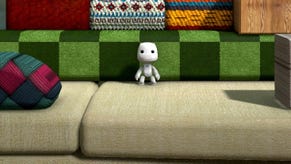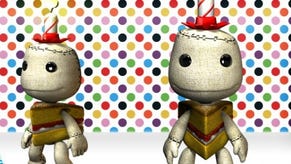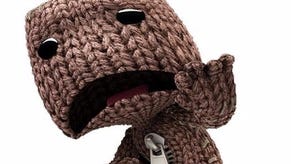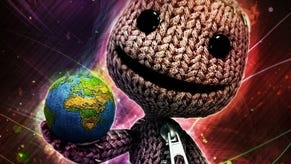LittleBigPlanet
The little game that could.
It was the little game with big ideas. A compact, cute PS3 platform game from a tiny indie studio that wanted the world to muck in with its making, using level and object creation tools. But with time (and not very much of it at that), LittleBigPlanet became a very big game indeed.
It took off, like one of its own rocket-propelled skateboards. It became the poster-child for a new generation of gaming; commentators and Sony executives showered it in buzzwords, talking up connected communities creating constellations of content, portraying LittleBigPlanet as Spore in skate pants.
Sony got giddy with all the reflected glory and love. First it promoted the game's Sackboy avatar to platform mascot and ubiquitous totem of cool, and then elevated LittleBigPlanet itself to the status of a triple-A, blockbuster tent-pole of its entire platform strategy. It as good as said that this was the game that would save PS3, and even those who'd loved it at first sight had to wonder whether Media Molecule's funky experiment could take the strain.
Amidst all this big talk though, one of the game's big ideas got lost in the chatter: an idea that will probably mean more to more people than any of the Game 3.0 posturing and theorising, or the daringly ambitious online features, or the astonishing freedom of the creative tools. LittleBigPlanet sets out to resurrect the simple fun of a game you control with left, right and jump. It sets out to make the side-scrolling platform game relevant and exciting again. And it succeeds.
With its homespun beauty, irrepressible charm, wild momentum and tactile physics, LittleBigPlanet strongly recalls Nintendo's 1995 classic Yoshi's Island - and while it's nothing like as perfect a platformer, it's enough of a compliment to say that it can stand up to the comparison at all. The game's Story mode is a suite of some 20-odd levels made by Media Molecule that circumnavigate LittleBigPlanet's imaginary world.

The Tudor gardens of Britain; the African savannah; a haunted Tim Burton wedding in some spooky alternative South America; and on through Mexican badlands, American cities, mystical interludes in Japan and India, and a devious parody of a Siberian villain's lair. The conceit is that every themed stop on the way is curated by a creator, a king or magician who sets the scene and the challenges, the way players are later invited to themselves.
It's all portrayed in the game's unforgettable visuals, a dreamlike diorama of cardboard and sponge that blends the home-made aesthetic of Michel Gondry music videos with the heady surrealism and humour of stop-motion children's TV from decades ago, shows like The Clangers or The Magic Roundabout. The sticky-back-plastic stylisation clashes headlong with extreme realism; the rendering of light sources and textured surfaces is scientifically exact, as total a realisation of high-definition as you'll see anywhere in games this year. Characters, hazards and contraptions are conjured out of household objects, trinkets, plain chunks of material, stickers, gears and pullies and motors and joints.
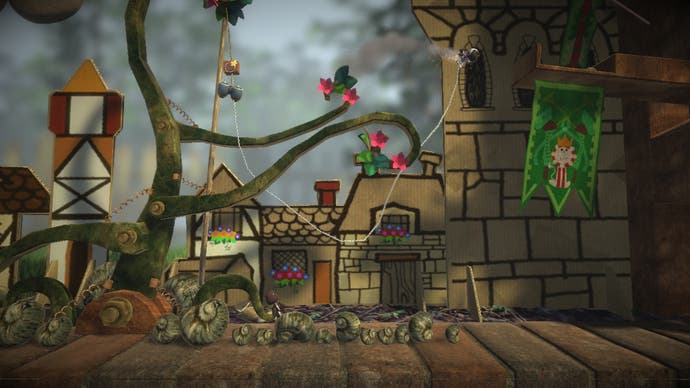
It's a marvel: a high-res, low-fi animated sketchbook that never fails to delight and astonish, even if the art in some stages has less charm than in others (the Japanese and Indian stages being the swoonsome highlight). Drinking in every detail is a compelling enough reason for several playthroughs of this fairly short Story mode. The vast number of hidden collectables is another: all of them are valuable and useful, being stickers, materials, machines, objects, tools or decorations to use in the game's Create mode, or costume pieces for dressing up the Sackboys (an addictive diversion in itself), or mini-game levels.
You'll also want to return to play as much of the game as you can in multiplayer. The levels and goals are identical - with the exception of a few optional puzzles for multiple players only - but with more than one Sackboy running around, LittleBigPlanet becomes a loosely-structured scrum of competition, collaboration and sheer, joyful mucking around. There are mini-races, and the scramble to collect bubbles of stuff for your score - those bubbles add a score multiplier if you chain them, and pop with a deliciously moreish sound. The camera scales competently for four players on a single machine, and it's played this way that LittleBigPlanet is at its absolute best: an irresistible, riotous, social and totally accessible entertainment.



